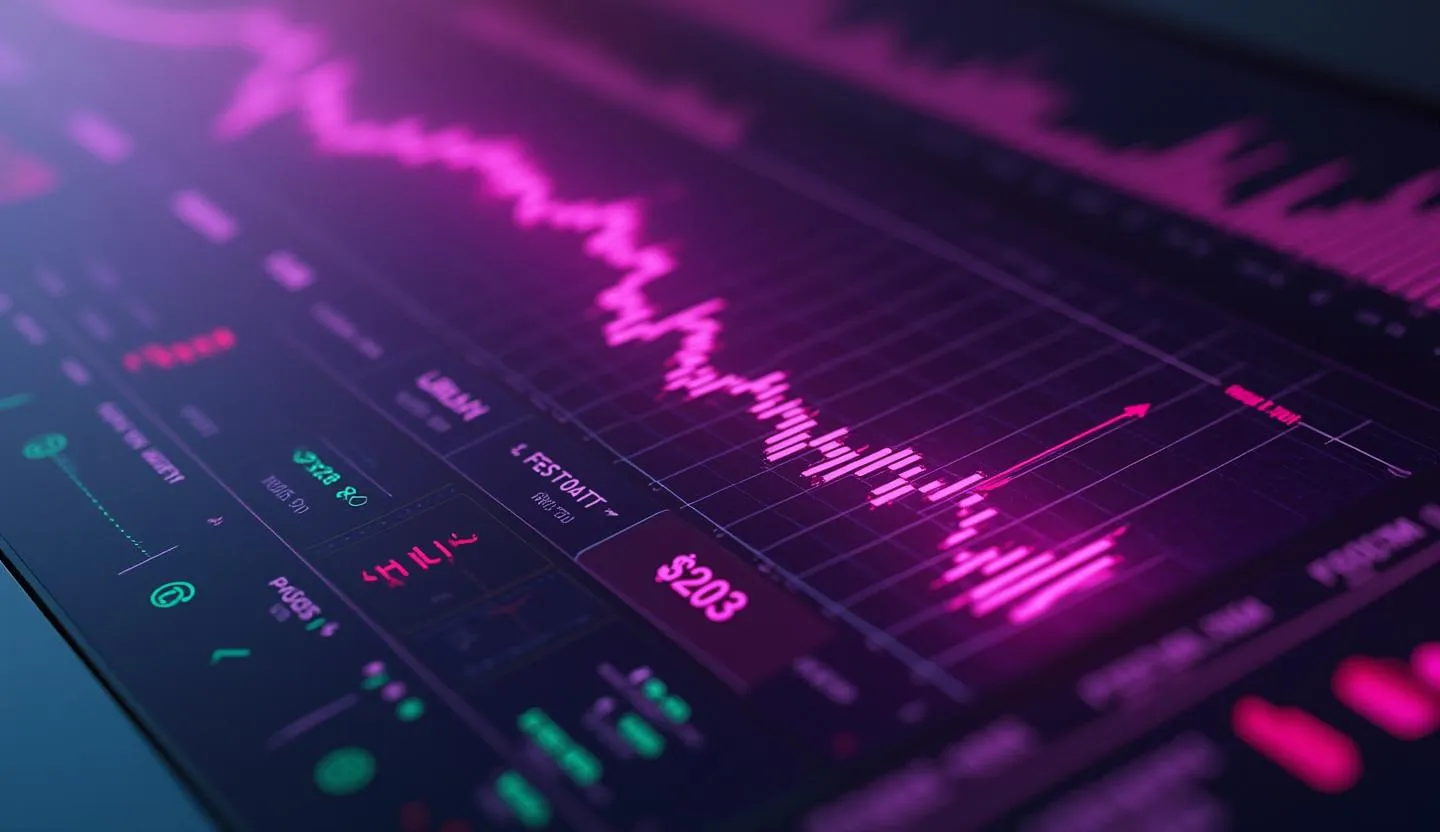Navigating a Downgrade at the Top of the Banking World
JPMorgan Chase & Co. (JPM) stands as the world’s premier global bank, a financial behemoth whose reach spans consumer banking, investment banking, asset management, and treasury services. As a bellwether for the U.S. and global economies, JPMorgan's quarterly performance and analyst sentiment have long been seen as proxies for the health of the banking sector at large. Today, a notable shift in sentiment has emerged: Robert W. Baird, a respected mid-sized U.S. brokerage and research firm, has downgraded JPMorgan from Neutral to Underperform, slashing its price target to $235. This move comes amid a period of strong price appreciation and historic highs for the stock. Analyst downgrades like this can mark turning points—offering crucial context for risk management, upside potential, and market expectations.
Key Takeaways:
Potential Downside: Baird’s new $235 price target implies a potential downside of approximately 18% from the current price of $286.35.
Recent Price Action: JPM hit an all-time high of $289.41 just one day ago, reflecting a powerful rally over the past year.
Sector News: Recent headlines report the Fed’s proposal to ease capital requirements (potentially unlocking $213B for big banks) and a likely dividend hike after passing the 2025 stress test—both generally bullish for large banks.
Downgrade Context: Baird’s move stands out as most analysts remain bullish or neutral; the firm's downgrade may signal caution around valuation or macro headwinds.
Technical Overextension: The stock’s recent RSI is near 80, suggesting potentially overbought conditions and increased risk of reversal.
The Downgrade in Focus: Analyst Rationale and Firm Reputation
Analyst Upgrade and Firm Background
Robert W. Baird is a well-regarded U.S. investment bank and research house, known for its independent equity research and nuanced sector calls. While not among the largest institutions, Baird’s analysts are respected for their sector diligence and willingness to take contrarian positions. The firm’s decision to move JPMorgan from Neutral to Underperform—its equivalent of a "sell" recommendation—carries more weight than a typical downgrade, especially after JPMorgan’s stellar run and in the context of widespread analyst optimism.
Baird’s new price target of $235 is a sharp revision, reflecting a significant divergence from consensus targets and the stock’s recent highs. This sets a clear, data-driven warning signal for investors who may be betting on further upside from current levels.
Analyst Confidence and Recent Performance
Baird’s call comes as JPMorgan’s share price has surged nearly 50% in the last twelve months, with the stock outperforming both the S&P 500 and its banking peers. The downgrade appears rooted in valuation concerns, technical overextension, and possibly the anticipation of normalizing macro conditions or profit headwinds as rates stabilize.
“Robert W. Baird’s reputation for independent, sometimes contrarian research, lends credibility to their cautious stance on JPMorgan at these valuations.”
JPMorgan: Financial Strength Meets Valuation Challenge
Stock and Financial Performance
JPMorgan’s financials remain robust. The bank recently cleared the Fed’s 2025 stress test, signaling strong capital reserves and resilience even under adverse scenarios. News outlets widely expect a dividend hike, further bolstering shareholder returns. Over the past year, JPM has consistently delivered rising earnings, strong top-line growth, and best-in-class return on equity among major U.S. banks.
Price Performance and Technical Indicators
1-Year Price Range: $190.90 (low, Aug 2024) to $289.41 (high, June 2025)
Current Price: $286.35 (down slightly from the all-time high)
RSI: 79.8 (overbought)
20-Day EMA: $273.48 | 20-Day SMA: $271.55
Bollinger Bands: Price now hugging upper band ($287.73)
The technical setup suggests that JPMorgan is highly overbought. While momentum has been a friend to bulls, such extreme readings often precede periods of consolidation or correction—especially when a credible downgrade emerges.
Potential Downside: Recalibrating Expectations
At $286.35, JPMorgan trades roughly 18% above Baird’s new $235 target. For investors, this implies a substantial risk of mean reversion, particularly if macro conditions shift or if earnings fail to justify extended multiples.
What does this mean for portfolio construction? For those with large, concentrated positions in JPM, the risk/reward balance has shifted—at least in Baird’s view. While not a call for panic selling, the downgrade is a stark reminder to reassess position sizing, hedging strategies, and sector exposure.
Recent News: Tailwinds and Their Limits
Regulatory Easing and Dividend Hike Potential
Fed Proposes Easing Capital Requirements:
The Federal Reserve’s plan to ease capital rules could free up $213B for big U.S. banks, including JPMorgan. This would generally be seen as a strong bullish catalyst, potentially enabling more aggressive share buybacks, dividend hikes, and lending capacity.
2025 Stress Test Results:
JPMorgan and peers passed the Fed’s latest stress test with flying colors, paving the way for higher dividend payouts. According to Zacks, “JPMorgan, Goldman Sachs, Bank of America and other major banks are poised for dividend hikes as a milder 2025 stress test signals capital strength.”
Strategic Hires:
JPMorgan recently brought on Anthony Diamandakis, a veteran dealmaker, as vice chair of its Strategic Investors Group, signaling continued investment in client relationships and deal flow.
Why the Downgrade Now?
With so many positive headlines, Baird’s downgrade might seem counterintuitive. But this is precisely what makes it noteworthy. The firm appears to be taking the long view, focusing on stretched valuation, technical froth, and the risk that recent good news is already priced in. For investors, this divergence from consensus is a call for deeper due diligence.
Risk Management and Portfolio Strategy
Navigating Contrarian Analyst Calls
Downgrades of this magnitude—especially from firms with a record of independent thinking—can mark inflection points. Historically, stocks trading at technical extremes and facing sudden, credible downgrades often experience elevated volatility, if not outright corrections.
Table: JPMorgan Key Metrics Post-Downgrade
Metric | Value |
|---|---|
Current Price | $286.35 |
Baird Price Target | $235.00 |
Potential Downside | 18% |
1-Year High | $289.41 |
1-Year Low | $190.90 |
20-Day EMA | $273.48 |
RSI | 79.8 |
Avg. Daily Volume | 9.44M |
What Investors Should Watch
Earnings Momentum: Next quarter’s earnings will be critical to justify the stock’s premium valuation.
Macro Trends: Watch for shifts in Fed policy or credit cycle deterioration.
Peer Comparisons: If other major banks face similar downgrades, sector sentiment could turn quickly.
Insider Activity: Large insider sales would add weight to the bearish case.
Conclusion: A Moment to Reassess, Not Panic
Baird’s underperform rating on JPMorgan is a rare, high-conviction contrarian signal at the top of a powerful uptrend. While the bank’s fundamentals remain sound and near-term news flow is positive, valuation and technical overextension now present meaningful downside risk—especially for investors who have chased the rally.
The message for investors is clear: Use this inflection point to re-evaluate your risk exposure, consider hedging or trimming oversized positions, and watch closely for confirmation or refutation of Baird’s thesis in the quarters ahead. In a market driven by both momentum and narrative, the arrival of credible, independent caution should never be ignored.

.svg)
.svg)
.svg)
.svg)

.svg)

.svg)
















